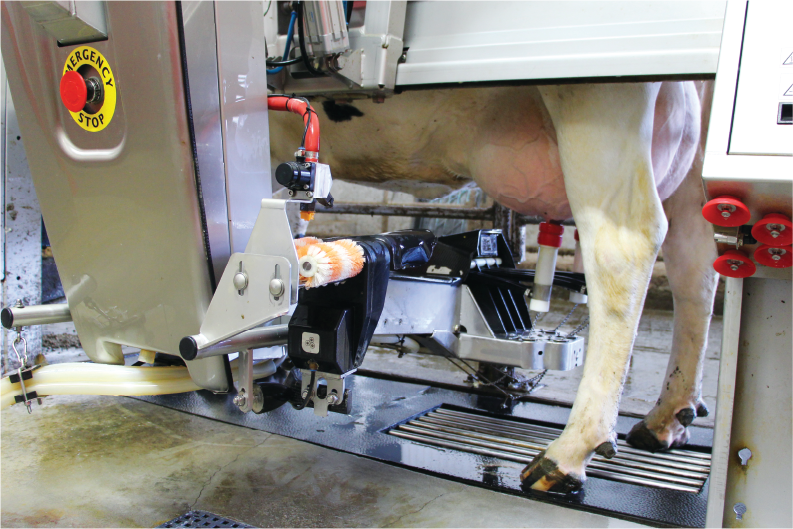
By Jeff Vandendool
Ruminant Specialist,
Grand Valley Fortifiers
Custom on-farm mashes can be formulated for producers who want to utilize on-farm commodities to save additional cost. One common key to success is ensuring the mash flows through the augers well. It is important to discuss with your GVF Dairy Specialist if your feeding system will be able to handle the robot mash. The best time to consider if you will feed a mash is when you are designing your auger system during construction or renovation. This is the cheapest and easiest time to make minimal changes that allow you to have this option in the future. Another key factor for success is that the feed is palatable. Cows must enjoy the feed they are receiving through the robot to continue to visit the robot. Many farms utilizing mash feeds have experienced an increase in visits as well as refusals. This has allowed some to decrease the amount of mash fed in the robot and feed more concentrates in the PMR at a lower cost. Farmers have been able to decrease kilograms of concentrate fed per 100 kilograms of milk below 10kg. Many farms have achieved feeding rates of 4kg of concentrate or less in freeflow traffic barns with some guided flow barns feeding rates of around 2kg per cow. Producers have now experienced improved robot performance at lower concentrate feeding rates with all types of robots.
Recently I completed a study analyzing 34 robot farms with 21 feeding pellets and 13 feeding a mash. Feeding a mash was correlated with approximately a 1kg increase in the amount of milk produced per cow. Additionally, these farms had the highest income over feed cost averaging $0.75 above farms feeding a pellet. These farms had the lowest cost of concentrate per 100kg of milk produced averaging $0.76 less in concentrate cost for every 100kg of milk produced. Feeding mash also correlated to a 0.15 increase in milking frequency.
When comparing purchased robot mash vs. a pelleted robot feed, switching to a Robolac Mash has saved producers around $40-$50/tonne depending on current commodity pricing. Mash feeds also allow for a larger selection of ingredients that are best for the cow performance, instead of having to consider if the ingredients will pellet properly. Further savings upwards of $100 a tonne can be realized if farmers can mix their own ingredients on farm to create a robot mash. This flexibility allows the ration cost to decrease while still seeing strong performance.
As expenses for farmers continue to rise, feeding a robot mash has allowed many producers to adopt robotic milking without seeing a substantial increase in total ration cost. To learn more about feeding a robot mash and how it can fit into your current feeding program please contact your Grand Valley Fortifiers Dairy Specialist or contact one of our nutritionists at Nutrition Direct.
This article was written for the Fall 2023 Eastern Dairy Grist. To read the whole Dairy Grist, click the button below.

